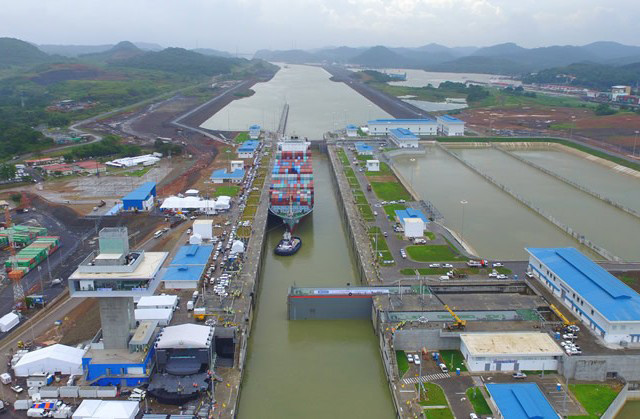Game Changer! Inauguration of expanded Panama Canal ushers in New Era of global trade

On Sunday, June 26th, 2016; the inaugural transit of the Panama Canal Expansion began with the transit of Neopanamax vessel COSCO Shipping Panama through the new Atlantic-facing Agua Clara Locks.
Originally named Andronikos, the vessel was renamed to honor and pay respect to the country of Panama and the Canal.
The Expansion Program is the Canal’s largest enhancement project. It included the construction of a new set of locks on the Atlantic and Pacific side of the waterway and the excavation of more than 150 million cubic meters of material, creating a second lane of traffic and doubling the cargo capacity of the waterway. While the Expanded locks are 70 feet wider and 18 feet deeper than those in the original Canal, they use less water due to water-savings basins that recycle 60 percent of the water used per transit.
Considered and analyzed for a decade with more than 100 studies, the Expansion will provide greater economies of scale to global commerce. It will introduce new routes, liner services, and segments (such as liquefied natural gas). In line with its commitment to customer service, the Panama Canal will continue to provide the world with value for another century and beyond.
Source: Panama Canal Authority
Comparing:
Expansion: 6,1 km – equivalent to 100 soccer fields.
Locks: Each is 427 meters high – equivalent to the Empire State Building in New York.
Steel: 192,000 tons were used – equivalent to 19 Eiffel Towers.
Floodgates: Each is 30 meters high – equivalent to the Christ the Redeemer statue in Rio de Janeiro.
Basalt (Rock): 12 million tonnes – equivalent to 2 Cheops Pyramids.
Basins: 18 in total – Each chamber has three water-saving basins. Each basin is equivalent to 25 olympic swimming pools.
Dredgers: The cutter head of the Mindi cutter and suction dredger weighs 11,300 kg and can dive up to 20 meters – which equals an eight-floors building.
The Rialto M. Christensen dredger substracted a rock whose weight was estimated at 102 metric tons from the navigation channel – equivalent to 70 medium-sized trucks.




